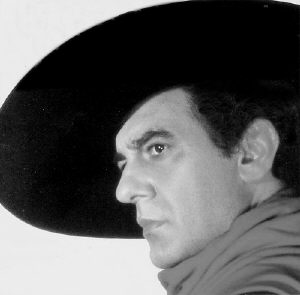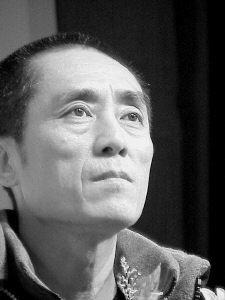|
Stellar team

The production team is comprised of stellar Asian artists. The English-language libretto is co-authored by Tan and National Book Award-winning novelist Ha Jin.
The czar of China cinema Zhang Yimou (Raise the Red Lantern and Hero) and Chinese set designers Fan Yue and Wang Chaoge devised a central black aluminum staircase and rope suspending bricks of the Great Wall turning the stage into an altar, royal court, prison cell, a princess's bedroom or the Great Wall under various theatrical effects and lighting.

Adapted from Wei Lu's screenplay The Emperor's Shadow (Qin Song), The First Emperor is a riveting tale of nationalism, passion and betrayal. The story focuses on Emperor Qin Shi Huang--the first emperor who unified ancient China in 221 B.C.--a controversial tyrant who is best known for his conquests and building the Great Wall. The warlord is perhaps best remembered by the modern Chinese for creating phalanx of terra-cotta army in his Xi'an tomb and his notorious acts, such as book burning and live-burial of intellectuals to placate dissent voices in his new-born kingdom.
In recreating the life of the dictator, the librettists deliberately look beyond the politics and dark side and reduce the controversial figure to a human level-- how he is torn between his love for his daughter Princess Yueyang and the greater responsibility for his newborn nation.
Tan says the greatest operas are comprised of romantic stories and he believes the emotional and sensual elements can better serve the dramatic function and propel the story and music.
Extensive research
Tan delved into extensive research to find traces and clues of the ancient sound. But to his dismay, there were few historical materials describing the instruments and melodies in the ancient Qin Dynasty imperial court.
"From two lines in a history book that I found in the Shanghai Museum, I read that ceramics was widely used and that music was made mostly with chanting accompanied by ritualistic body movements, such as clapping and hitting the chest and thigh," he says.
"I opened the opera with an unconventional ensemble in which musicians will play specially designed Chinese drums by hitting it with stones, a new way of playing that I invented and visualized for the music from 2,000 years ago," he says.
Besides the new techniques, Tan employs an assemblage of ceramic chimes, giant bells, guzheng, water-phones, and ceramic instruments, such as terra-cotta clay pots and tiles in different sizes and shapes to add sonic texture to the performance.
Tan dislikes the use of "fusion" to label his works. He thinks his works are created through a more organic process--the confluences and clashes of East and West operatic and theatrical techniques. This is evident in his avant-garde approach to his previous works, such as paper music, opera of tea and multi-media cello concerto The Map, which creates borderless musical dialogues between aboriginal tribes in China and orchestra in New York.
"I hope to create a new form of theatrical tradition, a new language in which each individual component becomes indistinct and inseparable from the other parts. The opera tradition stays but also forms a new one," he explains.
To achieve this interaction, Tan incorporates Peking opera into The First Emperor. "I love both Western opera and Peking opera. I find them very dramatic, theatrical and colorful," he says. "Each also possesses unique qualities--the Western opera has beautiful vocal lines while the Eastern opera has ritualistic percussive energy," he explains.
New styles
As the opera crowd is shrinking in the West, major opera houses worldwide have been using new ways to inject new energies into this traditional art form. Most notable is Met's huge promotional campaigns to bring in new audience-through live broadcast of Madame Butterfly at the Times Square and the launch of affordable rush-tickets this fall.
Director Zhang Yimou believes it is crucial to reinvent the Western operatic traditions and make it relevant in modern times. "Opera is an elitist art form in the West. It has more than 400 years of history but is now facing a lot of challenges. I hope our opera can create a new incentive and attract more people to enjoy the musical and visual wonder," he says.
The First Emperor is Zhang's second foray into directing opera. He shares the techniques from his 1999 revamping of Puccini's Turandot at the Forbidden City to create an operatic pageantry for this epic production. "Honestly, I know nothing about [Western] opera. I just treat it as Peking opera and make sure there's a continuous visual dynamic-exuberant colors and interesting movement on the stage," he says.
| 